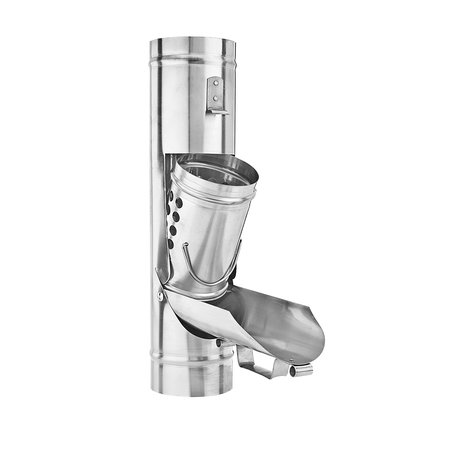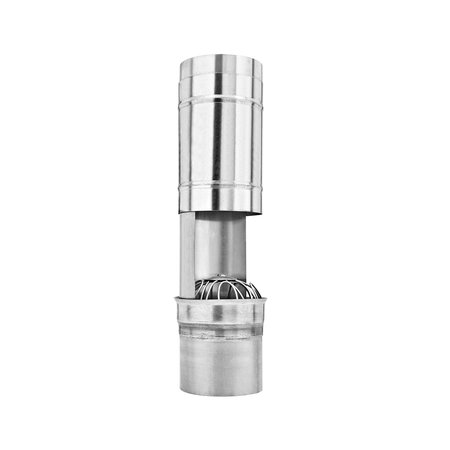
With the leaf catcher, rainwater is reliably filtered, and accumulated leaves and other debris are collected in a leaf guard. Maintenance can be done right from the ground.... more
Leaf catcher
Nominal size
76, 80, 87, 100
Materials
Not available in all sizes

With the leaf trap, rainwater is reliably filtered, and accumulated leaves and other debris are trapped in a sieve. Maintenance can be done right from the ground.... more
Leaf trap
Nominal size
80, 87, 100, 120
Materials
Not available in all sizes
Safe and easy to clean – Leaf catchers and traps from GRÖMO.
The accumulation of bad weather requires safe solutions.
The last several years have shown that bad weather with heavy rain and storms can and will occur once in a while in the future. This doesn’t just mean a lack of good weather, but also hard work for the roof drainage system. The problem with that isn’t just the masses of water that have to be handled, but also the branches and leaves that are blown onto the roofs during storms. If these collect in the roof gutter or even in the drainpipe, the rainwater can't flow through anymore. This causes an overflow.
The best solution is the surest one.
The best option for ensuring that the rainwater runs down safely is a leaf catcher or a leaf trap in the downpipe. The leaf catcher is very easy and above all, safe, to monitor and clean due to the flap that has to be reached from the ground. And with the leaf trap, the leaves can be removed from the ground. So it’s still possible to empty the basket or the leaf sieve itself when bad weather is imminent. The leaf catcher also offers the possibility of using the flap as a rainwater pipe flap so that rainwater can be diverted into a rain barrel.
Deployed quickly thanks to easy assembly.
The leaf catcher and the leaf trap from GRÖMO are available in both zinc and copper. Depending on the downpipe and your needs, you can select a nominal size of 76, 80, 87, or 100 for the leaf catcher. The leaf trap is available in nominal sizes 80, 87, 100, and 120. For flawless functionality, the leaf catcher or leaf trap must be mounted on an easily accessible spot. The leaf trap is installed in the downpipe at the desired height. This can be done without too much effort, even retroactively for a system already in place. For retroactive installation of the leaf catcher or leaf trap, a piece will be sawed out of the downpipe at the desired spot. Now the leaf guard is set in the hole, and pushed into the upper and lower ends of the downpipe until it hits the respective bead at the end stop. For proper mounting, the downpipe should be fixed in place with pipe brackets if needed. If everything is fully assembled, the leaf guard in question can be put to work and reliably collect falling leaves and other dirt. For periodic cleaning on the leaf catcher, the latched leaf basket is quite simply removed from the leaf catcher and emptied. Then it is placed back in, ensuring the full impact. The leaf trap can be cleaned by simply sliding up the sealing pipe, where the leaf sieve is located. This can now be cleaned without a problem or removed as desired. The leaf basket on the leaf catcher, or the leaf sieve on the leaf trap, must be removed in winter to prevent the risk of freezing over.